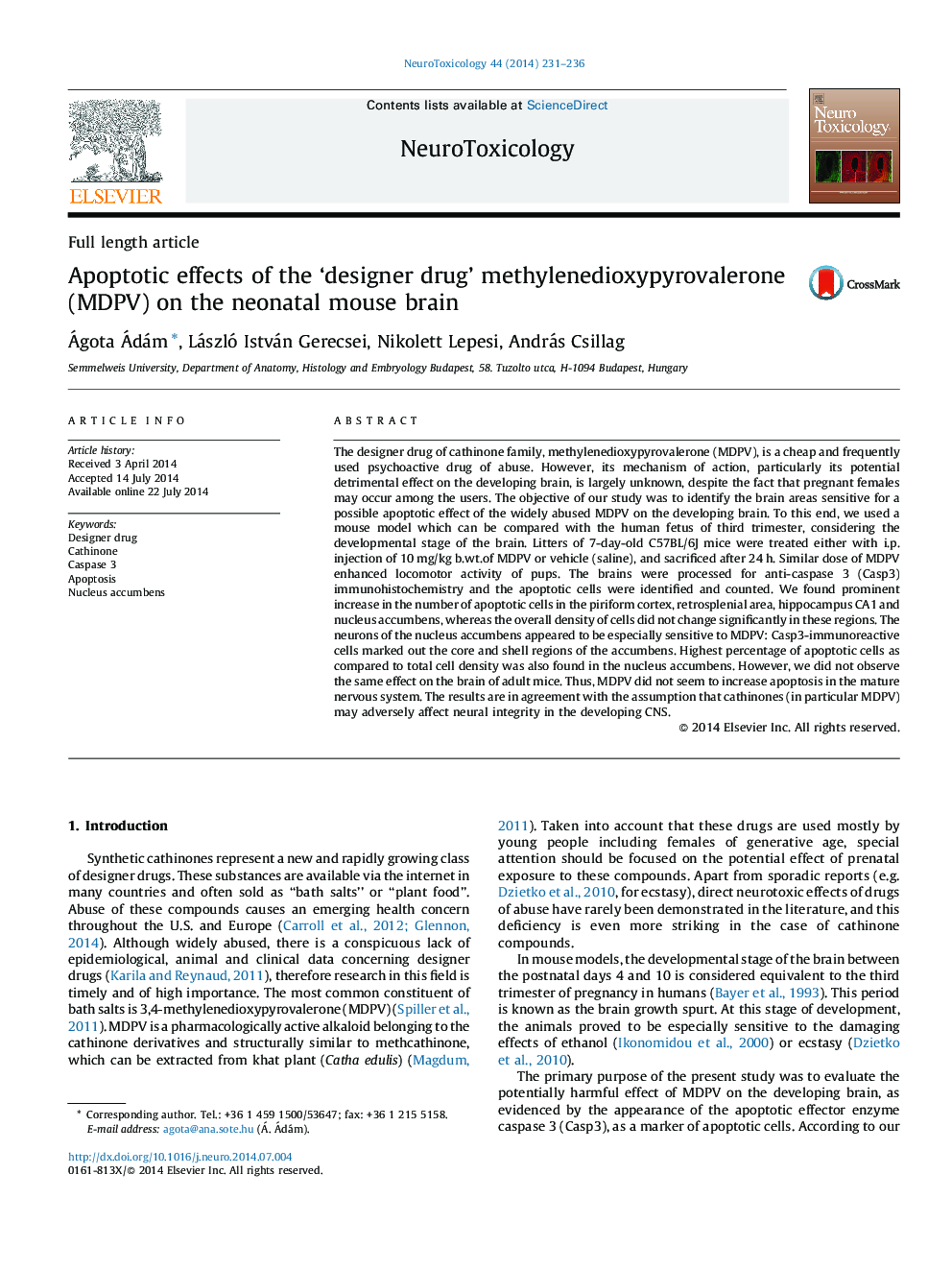| Article ID | Journal | Published Year | Pages | File Type |
|---|---|---|---|---|
| 2589677 | NeuroToxicology | 2014 | 6 Pages |
•The designer drug MDPV induces acute apoptosis in neonatal mouse brain.•MDPV induced apoptosis is characteristic for limbic forebrain centers.•Nucleus accumbens is the prime target of drug-elicited apoptosis.
The designer drug of cathinone family, methylenedioxypyrovalerone (MDPV), is a cheap and frequently used psychoactive drug of abuse. However, its mechanism of action, particularly its potential detrimental effect on the developing brain, is largely unknown, despite the fact that pregnant females may occur among the users. The objective of our study was to identify the brain areas sensitive for a possible apoptotic effect of the widely abused MDPV on the developing brain. To this end, we used a mouse model which can be compared with the human fetus of third trimester, considering the developmental stage of the brain. Litters of 7-day-old C57BL/6J mice were treated either with i.p. injection of 10 mg/kg b.wt.of MDPV or vehicle (saline), and sacrificed after 24 h. Similar dose of MDPV enhanced locomotor activity of pups. The brains were processed for anti-caspase 3 (Casp3) immunohistochemistry and the apoptotic cells were identified and counted. We found prominent increase in the number of apoptotic cells in the piriform cortex, retrosplenial area, hippocampus CA1 and nucleus accumbens, whereas the overall density of cells did not change significantly in these regions. The neurons of the nucleus accumbens appeared to be especially sensitive to MDPV: Casp3-immunoreactive cells marked out the core and shell regions of the accumbens. Highest percentage of apoptotic cells as compared to total cell density was also found in the nucleus accumbens. However, we did not observe the same effect on the brain of adult mice. Thus, MDPV did not seem to increase apoptosis in the mature nervous system. The results are in agreement with the assumption that cathinones (in particular MDPV) may adversely affect neural integrity in the developing CNS.
